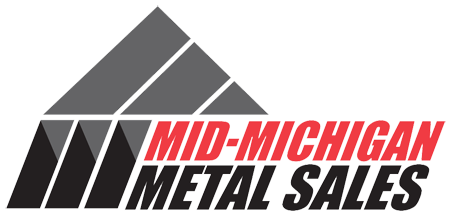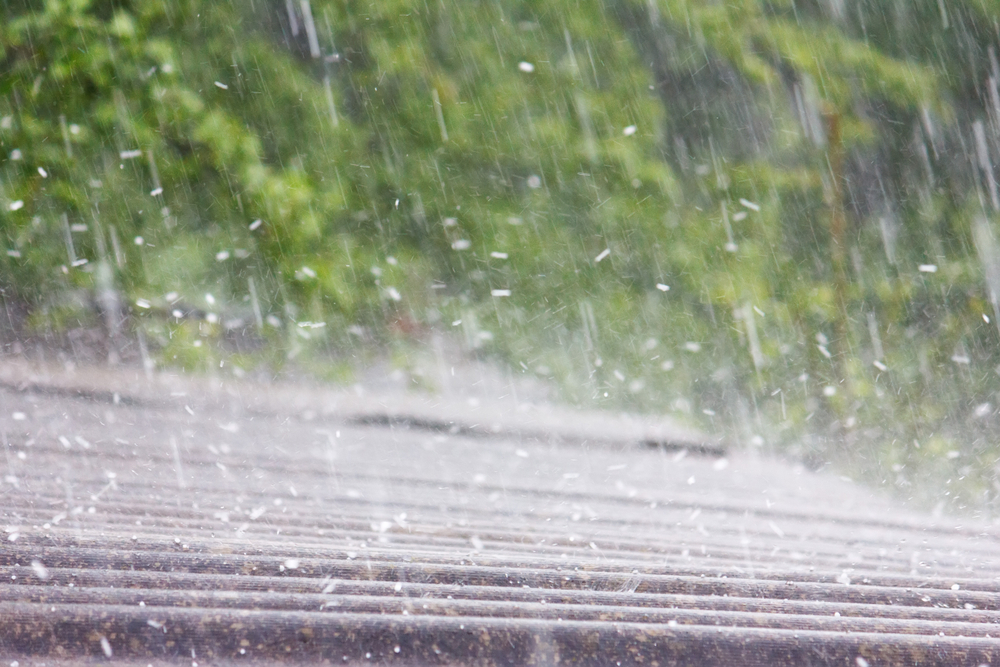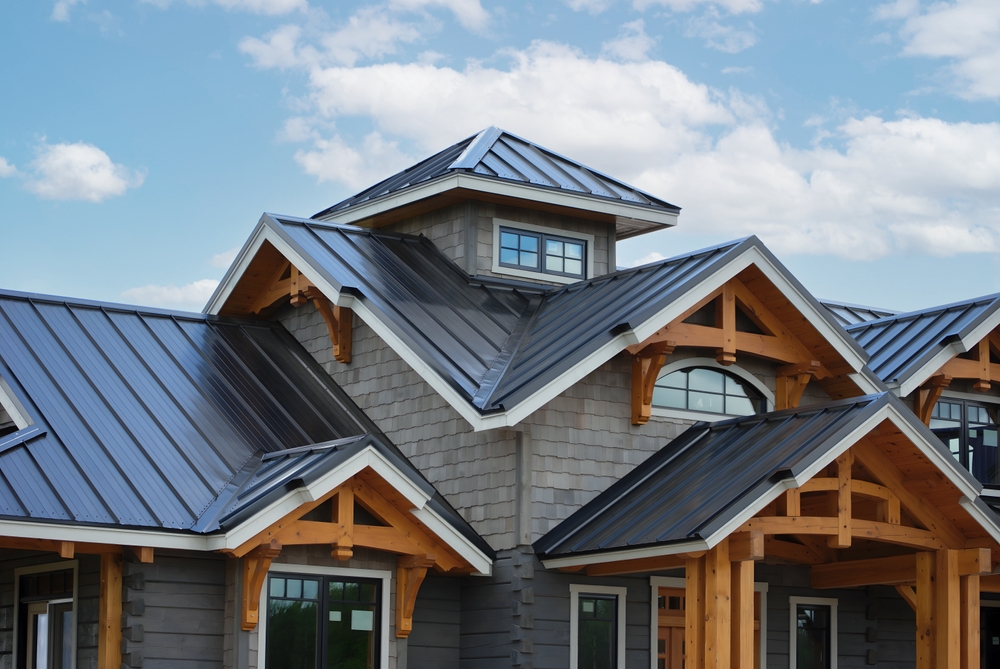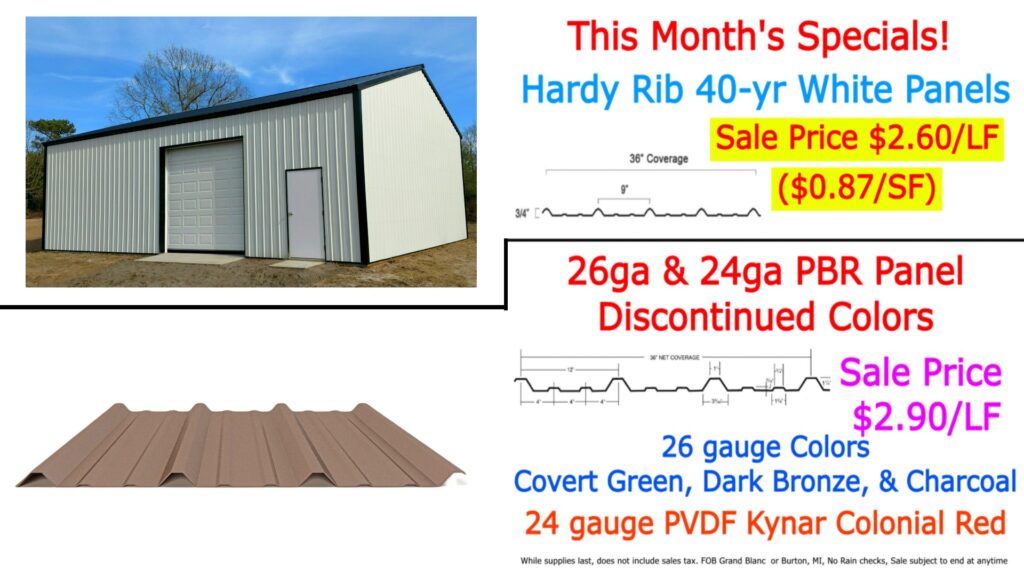There are a number of areas where metal roofs are hugely beneficial to buildings and their occupants, and one great example here is how simple and easy they are to install on top of most prior roofs. A metal roof can almost always be installed over a prior shingle roof or other roofing material, with the longevity and cost-efficiency to make this a worthwhile pursuit in many cases.
At Mid Michigan Metal Sales, we’re here to help with a huge range of metal roofing products and services for clients around Michigan, including metal roofing panels, metal shingles, metal siding and more. Here are some of the benefits of metal roof installation over prior roofing materials, plus some basic steps for installation among our DIY readers who will be performing this job themselves.
Why Metal Roof Installation Over Prior Roof is Beneficial
There are several advantages to choosing metal roof installation over prior roofing materials, including:
- Cost efficiency: As mentioned earlier, installing a metal roof over a prior one can save you money in the long run. This is because you avoid the cost of completely removing and disposing of your old roof, plus you also gain the added benefits of energy savings and longevity that come with metal roofs.
- Durability: Metal roofs are known for their durability and longevity, often lasting two to three times longer than traditional roofing materials. This means less maintenance and repair costs over time.
- Energy efficiency: Metal roofs are highly reflective, meaning they can reflect sunlight and reduce heat absorption into the building. This results in lower energy bills during hot summer months, which can add up significantly over time.
- Easy installation: As mentioned earlier, metal roofs are relatively simple and easy to install over prior roofing materials. This makes them a great option for DIY enthusiasts or those looking to save on labor costs.
- Hail, Wind and Fire Resistance: Because of their durability and strength, metal roofs are highly resistant to hail, wind and fire damage. This can provide peace of mind for homeowners who live in areas prone to extreme weather conditions.
- Property value: Finally, installing a metal roof can increase the value of your property, making it a worthwhile investment for both current and future homeowners.
Our next few sections will go over some simple tips for self-installing a new metal roof over a prior existing one.
Inspection and Condition Assessment
Before beginning the installation process, it’s important to thoroughly inspect your prior roof and assess its condition. This includes checking for any damage or weak areas that may need to be addressed before installing the metal roof.
As you’re doing this, be sure to also check for any existing leaks or moisture issues. These will need to be resolved before adding the new metal roof on top. For instance, if there is any mold or mildew present, it will need to be cleaned and treated properly.
Preparation Steps for Metal Roof Installation
Once you’ve inspected and addressed any issues with your prior roof, it’s time to begin preparing for the metal roof installation. Here are some basic steps to follow:
- Clean the existing roof: Remove all debris, dirt and grime from the prior roof to ensure a clean surface for the new metal roof.
- Measure and order materials: Measure your roof carefully and order enough metal roofing panels to cover the entire area, plus some extra for waste and mistakes.
- Gather necessary tools: Make sure you have all the necessary tools on hand before beginning installation, including safety equipment such as gloves and goggles.
Adding Underlayment
For the vast majority of metal roofs being installed over a prior one, an underlayment will be necessary. This refers to a layer that provides a barrier between the metal roof and the prior existing one.
Underlayment materials may vary, but generally include options such as felt or synthetic underlayment. These help to protect against moisture and provide a smooth surface for the metal panels to be installed on top of.
Installing Metal Roofing Panels
With your underlayment in place, it’s time to start installing the metal roofing panels. Some panels are designed specifically to be installed over previous shingles, while some are not. Here are some basic steps to follow:
- Begin at the bottom: Start by installing the first panel at the bottom of the roof, ensuring it is aligned properly.
- Secure with screws: Use appropriate screws to secure the metal panel in place, following any specific manufacturer instructions.
- Overlap each panel: As you continue to install panels, be sure to overlap each one properly to ensure proper water drainage.
- Cut panels as needed: Depending on the size and shape of your roof, you may need to cut some panels to fit into smaller or odd-shaped areas.
- Finish with trim and flashings: Once all the metal roofing panels are in place, finish off the edges and joints with appropriate trim and flashings.
As you can see, installing a metal roof over a prior one is relatively simple and straightforward. However, it’s important to thoroughly inspect and prepare your existing roof before beginning the process. If you have any doubts or concerns, it’s always best to consult with a professional roofing contractor for assistance.
At Mid Michigan Metal Sales, we offer high-quality metal roofing materials and services to clients around Michigan. Contact us today to learn more about our products and solutions!



